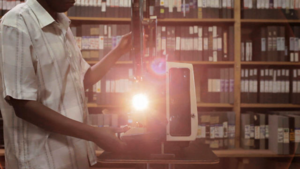Benjamin Tiven à l’erg
De erg
Révision datée du 18 juillet 2019 à 12:26 par Ergbot (discussion | contributions) (Page créée avec « {{Actualités |Subtitle=11 décembre 2015, de 14h00 à 16h00 |Start= |End= |Published=2015/12/10 |Image=E7c0c627-72ca837-0a16a.png |Spipid=867 |Description=<div class="lis... »)
| Actualités | |
|---|---|
| Publiée | 2015/12/10 |
Benjamin Tiven
à l'erg
11.12.2015, de 14h00 à 16h00
local 7 (auditoire)
Benjamin Tiven (USA) est l'auteur de deux films : A Third Version of the Imaginary (2012) et Two Devices (2014), qu'il viendra nous présenter avant d'évoquer ses recherches en cours. A Third Version of the Imaginary a notamment été projeté au festival Courtisane (Gand), Rotterdam International Film Festival, Vienna International Film Festival, Arsenal Cinema (Berlin), FID Marseille, Oberhausen Short Film Festival, 25FPS Festival (Zagreb), Images Festival (Toronto), L'Age d'Or (Bruxelles)...
I work within a cluster of ongoing research into architecture, cinema history, and typography. Recent focal points have included : the political image in Kenyan television ; the displacement of modernist architecture into a colonialist state ; the over-identification of a historian with his subject ; and the engineering of animatronic robotics. My films tell short, self-reflexive stories through animated or documentary imagery, dramatizing political legacies or technological deployment through modes of translation, allegory, formal recursion, and occasional dark humor. I aim to build counter-narrative backstories for contemporary phenomena, often starting from the challenge of finding a mode of figuration for some impossible image. For instance, the film ''Two Devices'' (2014) proposes to narrate the imminent mechanization of natural forms, through an animated donkey who has second thoughts about committing an act of violence, and a robot bird who struggles to fly away from its human handlers. ''A Third Version of the Imaginary'' (2012), traces an encounter with the video and film library of the Kenya Broadcasting Corporation in Nairobi. We watch the station’s librarian struggle to screen some recovered 16mm material on a misbehaving projector. When the elegant image of the nation’s founding president is forced to stutter and vanish, the work becomes a visual and narrative echo chamber, addressing video’s address of film. (Benjamin Tiven)
contact : Sammy Del Gallo
sammy.del.gallo@erg.be
